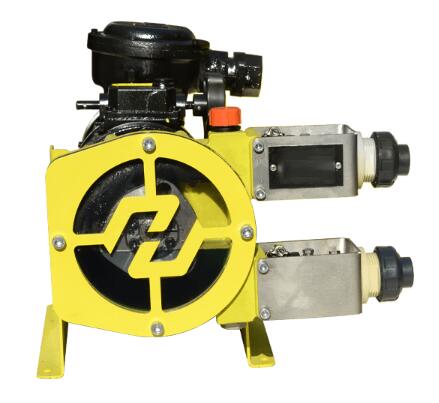Post time: Dec-29-2023
Understanding the Distinctions: Tube Pump vs. Hose Pump
When it comes to fluid transfer applications, tube pumps and hose pumps are frequently mentioned. Although the terms are often used interchangeably, there are subtle yet crucial differences between the two. In this article, we will explore the unique features of tube pumps and hose pumps, shedding light on their respective designs, applications, and advantages.
Tube Pumps: The Essence of Precision
Design and Mechanism
Tube pumps operate on the principle of peristaltic action, involving the compression of a flexible tube to propel fluid. The flexible tube, typically made of materials like silicone or rubber, is fixed within the pump casing. As the rotor compresses the tube, it creates a positive displacement action, effectively moving the fluid through the tube.
Applications
Tube pumps are known for their precision, making them ideal for applications that require accurate and controlled fluid handling. Laboratories often leverage tube pumps for tasks that demand precise dosing, where the integrity of the fluid being transferred must be maintained.
Advantages
The advantages of tube pumps include their ability to handle shear-sensitive fluids delicately. Additionally, their design eliminates the need for valves and seals, simplifying maintenance and enhancing reliability.
Hose Pumps: Robustness in Action

Design and Mechanism
In contrast, hose pumps also operate based on peristaltic action but utilize a flexible hose instead of a tube. The hose is placed inside a circular pump casing, and a rotor compresses the hose at one point, creating a positive displacement action that propels the fluid through the tube.
Applications
Hose pumps find applications in industries where the transfer of abrasive or corrosive fluids is common. Their robust construction makes them suitable for challenging environments, such as mining, construction, and chemical processing.
Advantages
Hose pumps share some advantages with tube pumps, such as gentle fluid handling. Additionally, their resistance to abrasion and ability to handle challenging materials make them valuable in demanding industrial settings.
Considerations for Selection
When choosing between a tube pump and a hose pump, several factors come into play. Considerations include the nature of the fluid being handled, flow rate requirements, and the level of precision necessary for the application. Material compatibility is also crucial to ensure the longevity and efficiency of the pump.
Conclusion: Tailoring Solutions to Specific Needs
In conclusion, the choice between a tube pump and a hose pump depends on the specific requirements of the application. Tube pumps excel in precision tasks, making them suitable for laboratory and controlled environments. On the other hand, hose pumps showcase their strengths in robustness, making them indispensable in challenging industrial settings.
For inquiries about tube pumps, hose pumps, or to find a reliable supplier, please do not hesitate to contact us. Our dedicated team is ready to assist you in selecting the right pump for your unique needs.

















